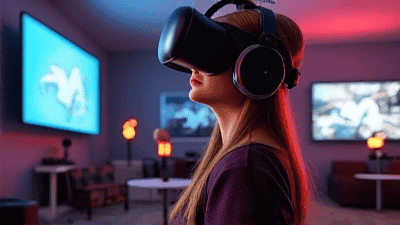
The landscape of television has undergone a significant transformation in recent years, driven largely by the rise of social media platforms. Among these, TikTok has emerged as a major player, fundamentally altering how viewers discover and engage with TV shows. With its unique format focused on short, engaging videos, TikTok has become a platform where trends are born, ideas flourish, and, crucially, where viewer preferences are shaped.
The Rise of TikTok
A Brief Overview
TikTok, launched internationally in 2016, quickly gained popularity for its user-friendly interface and short-form video content. The platform allows users to create and share videos ranging from 15 seconds to three minutes, promoting creativity and engagement among its diverse user base. The app's algorithm tailors content to individual preferences, making it easier for users to discover new trends, challenges, and interests, including the latest television shows.
TikTok's Unique Algorithm
One of TikTok's defining features is its highly effective algorithm, which uses sophisticated machine learning techniques to analyze user interactions and preferences. This algorithm ensures that users are presented with content that aligns with their interests, making it easy to discover new shows that may not have been on their radar otherwise. The algorithm prioritizes engagement over follower count, enabling content creators to go viral regardless of their existing audience size. This democratization of content discovery has implications for how TV shows garner attention.
How TikTok Influences Show Discovery

Creating Awareness Through Viral Moments
TikTok has a unique ability to create viral moments around television shows. A well-edited clip from a new series, a funny meme based on a character, or a dramatic scene can capture the attention of users and entice them to explore the show further. This viral potential transforms individual scenes or quotes into talking points that can trend widely across the platform, generating significant buzz.
As viewers engage with these moments, they become ambassadors for the shows they love. A catchy sound from a series can inspire countless recreations, leading users to seek out the original source material. In this way, TikTok acts as a powerful marketing tool, amplifying the reach of television content and driving audiences to tune in.
Influencer Endorsements and Collaborations
TikTok influencers play a vital role in shaping viewer preferences and promoting TV shows. Popular creators often share their thoughts on new series, providing informal reviews that resonate with their audiences. When a favorite influencer endorses a show, their followers are more likely to check it out, leading to increased viewership.
Collaborations between TV networks and TikTok influencers have become increasingly common. These partnerships allow shows to reach younger demographics that may not engage with traditional marketing methods like TV commercials and print ads. By leveraging the influence of popular TikTok personalities, shows can create genuine excitement and anticipation around their launches.
The Use of Trends and Challenges
TikTok is known for its trending challenges and sounds, many of which can be tied to specific shows. For instance, a particular dance challenge may originate from a scene in a series, causing a spike in interest for that show. As users participate in the challenge, they inadvertently market the series to their followers, creating a ripple effect that can lead to a broader audience discovery.
In addition, TikTok often sparks emotional responses through heartfelt or humorous content related to shows. Reaction videos and fan edits can spread rapidly, drawing in viewers who may have previously overlooked a series. TikTok harnesses the power of social interaction to create authentic experiences, making it easier for audiences to connect with shows on a personal level.
How TikTok Drives Viewership Trends
Instant Feedback and Content Consumption
TikTok's short video format caters to a generation of viewers accustomed to quick content consumption. This preference for brevity has shifted expectations regarding how shows are presented. Audiences want to see the highlights, the most engaging moments quickly, leading some networks to curate specific clips for TikTok.
As viewers sample content through short clips, they may decide to watch an entire series based on the brief engagement they had with a video on TikTok. Conversely, if a viewer is unimpressed by a particular clip, they might abandon the show altogether. This instant feedback mechanism creates a two-way relationship between creators and audiences, driving viewership trends in real time.
How TikTok Facilitates Abandonment
While TikTok serves as a discovery tool, it can also lead to the abandonment of shows. If users encounter a clip that does not align with their tastes or expectations, they may be quick to dismiss the series entirely. The rapid-fire nature of content consumption can foster a "swipe and forget" mentality, where viewers move on to the next trending show without a second thought.
Moreover, as audiences engage more with certain types of content, they may develop specific preferences that lead them away from other genres. For example, if a user predominantly interacts with comedic content, they may be less inclined to explore drama series. This targeted engagement can narrow viewing habits, causing some shows to lose traction despite their quality.
The Role of Fandom and Community in Show Discovery

Community Engagement
TikTok fosters a sense of community around the shows viewers love. Fans often gather to share their thoughts, theories, and fan art, creating an engaging environment that celebrates their favorite series. This communal aspect encourages viewers to dive deeper into shows, promoting sustained engagement beyond initial discovery.
Fans frequently use TikTok to express their emotions toward characters or storylines. These videos resonate with others who share similar feelings, reinforcing connection and loyalty to the show. By showcasing reactions and interpretations, fans contribute to a collective narrative that elevates the viewing experience.
Building Anticipation for New Seasons
As new seasons of popular shows approach, TikTok can build anticipation among viewers. Fans create countdown videos, speculation posts, and trailers, generating excitement leading up to the premiere. This buildup can significantly impact viewership numbers when the series returns, as followers eagerly await the latest developments and resolutions to cliffhangers.
The communal aspect of TikTok also ensures that fans share their excitement, reinforcing the show’s relevance and desirability. As audiences engage in discussions and share their predictions, they contribute to a culture of anticipation that can elevate a show’s status in the public consciousness.
TikTok’s Impact on TV Marketing Strategies
Marketing Adaptations
Recognizing the influence of TikTok, many television networks are adapting their marketing strategies to align with the platform's unique characteristics. This includes creating tailor-made content designed specifically for TikTok, rather than repurposing traditional marketing materials. Clips, trailers, and promotional content are crafted with the platform’s format in mind to maximize engagement.
These adaptations enable TV shows to create relevant and catchy content that resonates with viewers. The authenticity of TikTok content is crucial; audiences favor relatable and genuine presentations over polished advertisements. By embracing this informal tone, networks can effectively market their shows and connect with younger audiences.
Investing in User-Generated Content
Television networks are increasingly leveraging user-generated content to promote shows. By encouraging fans to create their own videos related to a series, networks can tap into the authentic enthusiasm of their audience. Challenges and contests invite users to engage with shows in creative ways, resulting in free marketing and increased visibility.
This approach not only motivates fans but also fosters a sense of ownership over the content. As viewers participate in the promotion of shows they love, they invest emotionally, making them more likely to tune in and support future seasons.
The Future of TV Discovery in a TikTok Age

Evolving Consumption Habits
As TikTok continues to grow in popularity, it is reshaping the way audiences engage with television. The expectation for quick, digestible content will likely influence how networks create and market their shows. Traditional formats risk becoming obsolete as viewers gravitate toward the immediacy and interactivity offered by platforms like TikTok.
In this new landscape, creators may need to prioritize moments that translate well into short-form content to maintain relevance. The emphasis will shift toward producing captivating highlights that can capture viewer attention in seconds, rather than relying on lengthy episodes alone.
Changes in Audience Engagement
The role of the audience is evolving as well. Viewers are no longer passive consumers; they actively influence trends, create content, and shape narratives around the shows they love. Television series that encourage audience interaction and participation are more likely to succeed in this new environment.
As audiences engage in discussions, share their views on social media, and create content, their voices will continue to impact the landscape of TV discovery. Creators must remain responsive to audience feedback, recognizing the power of community engagement in shaping the conversation around their shows.
Challenges for Traditional Television
While TikTok offers new avenues for discovery, it also presents challenges for traditional television networks. As viewership patterns shift, networks must adapt to maintain relevance. They cannot rely solely on established marketing methods or promotional strategies, as younger audiences gravitate towards platforms that emphasize engagement and interaction.
Traditional TV shows may need to reconsider their release strategies, including the rollout of episodes. A delayed release schedule may not align with the instant gratification that TikTok viewers expect. Serialized storytelling might require more frequent content drops to capture and retain audience interest.
Conclusion
TikTok is revolutionizing the way we discover—and sometimes abandon—TV shows. Through its unique format, powerful algorithm, and emphasis on community engagement, the platform has created a new landscape for television discovery. Shows that leverage TikTok’s potential for viral moments, influencer partnerships, and user-generated content are more likely to capture audience attention and sustain viewership.
As the boundaries between traditional television and social media continue to blur, networks must adapt to the changing preferences of audiences. TikTok represents a shift toward quicker consumption, increased interactivity, and a stronger community connection. Its impact on the television industry is undeniable, and as viewers increasingly turn to the platform for guidance in their viewing choices, the future of TV discovery will continue to evolve in exciting and unprecedented ways.








